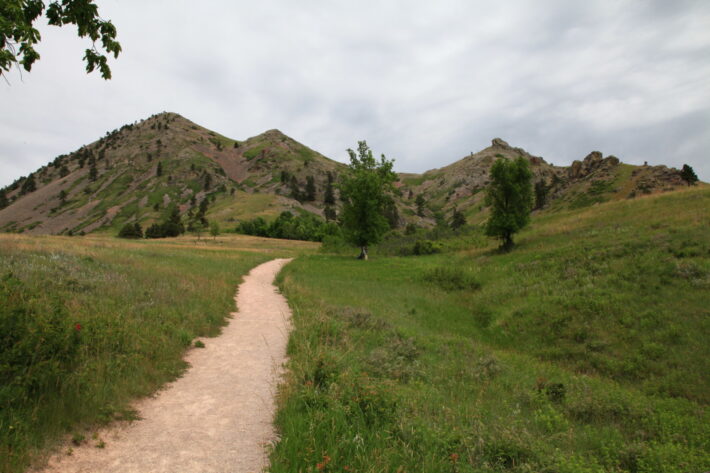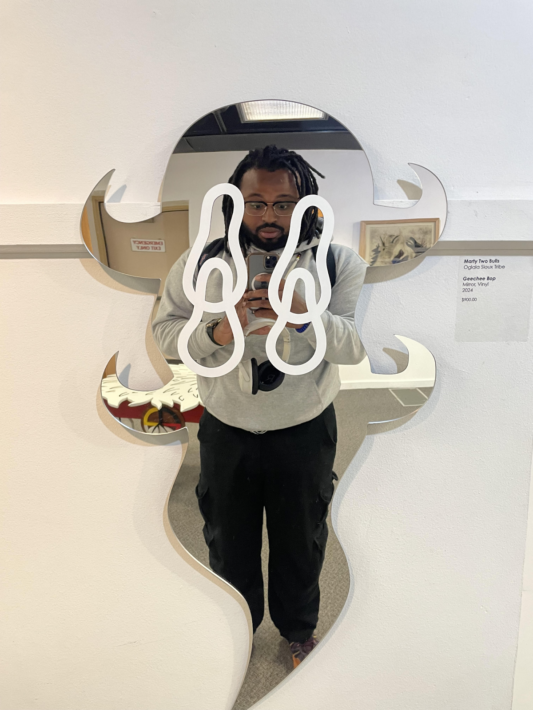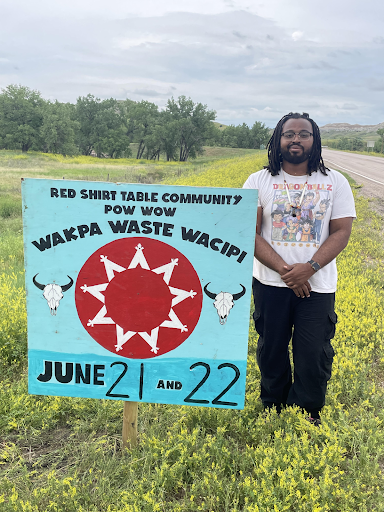
I never thought I would go to South Dakota. My way of thinking was, “What reason would I go there outside of removing another state from my bucket list?” All I knew about the state is that it is located in the middle of the country, its capital is Pierre, and the location of Mount Rushmore was home to a very sacred site for Native Americans. It wasn’t until my school chaplain offered me the opportunity to travel with Faith and Money Network to learn about the history of South Dakota and the Lakota people that I decided to visit. As an educator and a lifelong learner, it wasn’t hard for me to make my decision. Not only did I learn, but I felt a strong sense of community and solidarity with the group who took us in.
I wasn’t given any specific instructions from my employer regarding this trip, aside from being present. So I decided to ask myself the essential question, “How do the Indigenous people maintain their history despite their enslavement, displacement and disenfranchisement?” As an African-American, I know that my people also suffer from these tragedies. My colleage Oshae and I spent a day in Rapid City, and we noticed that the unhoused people there were primarily Native. Many posted signs discouraged panhandling. I told Oshae that Los Angeles has similar signs by major fast food chains. Considering that African-Americans represent 34% of the homeless population of LA, this instant connection I made justified looking at my essential question. I knew this trip could teach me more about preservation and perseverance through a different lens.
I had never been to an Indigenous reservation before, so I had zero expectations coming into the trip. However, Red Shirt Table was a phenomenal host throughout this experience. They were patient, informative, and provided new insight into the relationship between the Indigenous people and the system that occupies their daily lives. Our traveling hosts, including Mike, Bob, Matt and Erica, ensured that our days were well planned. All parties involved made us feel comfortable, no matter what hiccups we faced. Each day was an opportunity to engage with my essential question and open my heart to new things.
The Lakota, like many Indigenous people of North America, place great value on three things that help preserve and maintain their history: reverence, art, and community. On this trip, we visited sacred sites such as Bear Butte and Wounded Knee. Going there, I immediately recognized silence and how well respected the spaces were. Bear Butte was a fairly challenging hike, but what stood out was seeing many people doing spirit quests or just sitting in solitude, embracing the silence. Wounded Knee was also very eye opening. It was so quiet, you could hear a pin drop. It shows how much respect the Lakota have for their sacred places.

The artwork I saw throughout this trip was spectacular. Not only was our host reservation super talented, we saw so much talent from many museums and centers throughout the state. We saw innovative and colorful paintings, sculptures, and creative pieces that expressed the history of the Lakota people from different perspectives. The arts also showed in their storytelling and literature. Listening to Tony TenFingers’ stories about his grandma and telling ancient tales was a great standout in this experience. It showed how word of mouth phenomenally preserves Lakota history.
It felt very welcoming to be a guest of the Red Shirt Table community. Every night, we ate dinner together and learned about each other. From this portion of the experience, I learned about the internal struggles Native Americans face, how much they honor their ancestors, and the importance of community. These themes all echoed especially during the Red Shirt Pow Wow that took place during the last two days of our trip. The Pow Wow was a great experience. What I loved about it most was how each generation was represented. After a while, it felt like the ancestors were also there. So much respect given, you would’ve swore they were also in the physical space.

I would like to thank Red Shirt Table and Faith and Money Network for this very meaningful experience. Shout out to Erica and all parties involved for feeding us throughout the week. I also appreciate our host for letting us understand what is going on inside their world. I have a reason to go back to South Dakota due to the connections made from this experience. I can’t wait to see how Crazy Horse Memorial and Red Shirt Table’s economic ventures progress throughout the years. I will continue to honor and uplift the people who originated here throughout my educational practices.
Jibra’il Sutton | July 2024
Jibra’il Sutton teaches history to middle schoolers at The School of Los Angeles and was once described as someone’s “favorite teacher.” He attended FMN’s first Trip of Perspective to Red Shirt Table in June 2024.